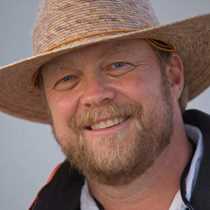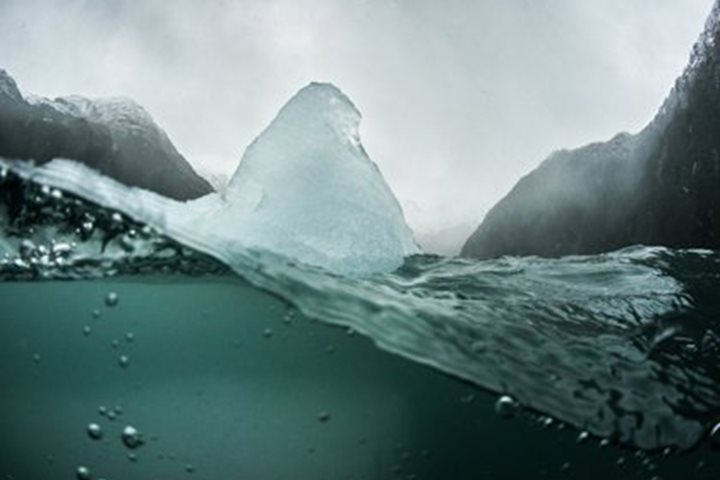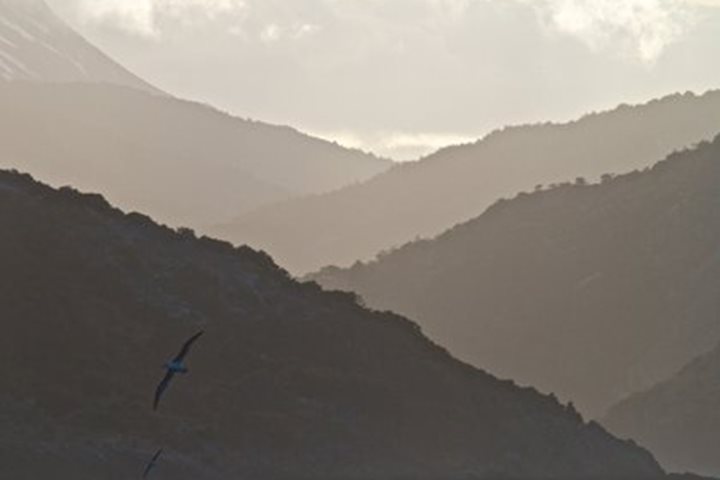A new day, a new country and we are closing on a dramatic nature reserve called New Island. 500-foot-high quartzite cliffs face west where the sea is ripped up by colliding currents, creating the perfect seafood restaurant. We have nearly fifty southern giant petrels following the ship, surfing on the wind off our beam, and out over the tide race albatrosses wheel, cormorant squadrons fly, and leaping towards us, a gang of gentoo penguins head out on a morning fishing trip.
The Zodiacs land us on a white sand beach, and we stride out for the western cliffs. Serenaded by scarlet-suited meadowlarks, we traverse the lush green sward of old sheep pastures, now dotted with upland geese and their fluffy goslings. Soon we can hear a distant hubbub on the wind, and the racket is revealed as we reach the cliffs: in a natural rock amphitheater, thousands of rockhopper penguins, imperial cormorants, and black-browed albatross are nesting where the wind whips up the cliff face. It is a spellbinding wild spectacle: we settle to watch the placid albatross perched on their adobe apartments while below them the feisty rockhoppers squabble and cackle in the street.
At midday the ship continues north, threading the narrow passage named Woolly Gut. It is indeed “woolly” today, a strong wind tearing spray off the tide race between West Point Island and West Falkland as we head for Carcass Island.
Zodiacs race us ashore through a maze of giant kelp to a dry slipway. The long walkers set off at once past dense gorse stands bursting with golden blossom. Past ancient Monterey cypress trees which shelter the red-roofed farmhouse, past the whirring wind generator and the shearing sheds, and out across the blasted heath. Short stands of diddle-dee (Empetrum rubrum) clothe the hillside here, upland geese with their broods are grazing busily, and turkey vultures glide past overhead, eyeing plump goslings.
We reach the tussac stands, an extraordinary habitat crucial to two-thirds of the nesting birds here, but 80% has been lost since the settlers took to sheep and cattle farming. Its shelter provides perfect cover for all species, and holds the fragile peat soils together. A tough fight back against a Force 6 wind, accompanied at every pause by Johnny Rooks. These, the smartest of Falkland hawks, watch us carefully in case anyone should lag or stumble. Their touching curiosity masks culinary self-interest. We survive to find a farmhouse table groaning with the greatest selections of cakes, cookies and confectionery in the southern hemisphere, and, keen with hunger, we swoop on them like Johnny Rooks.









